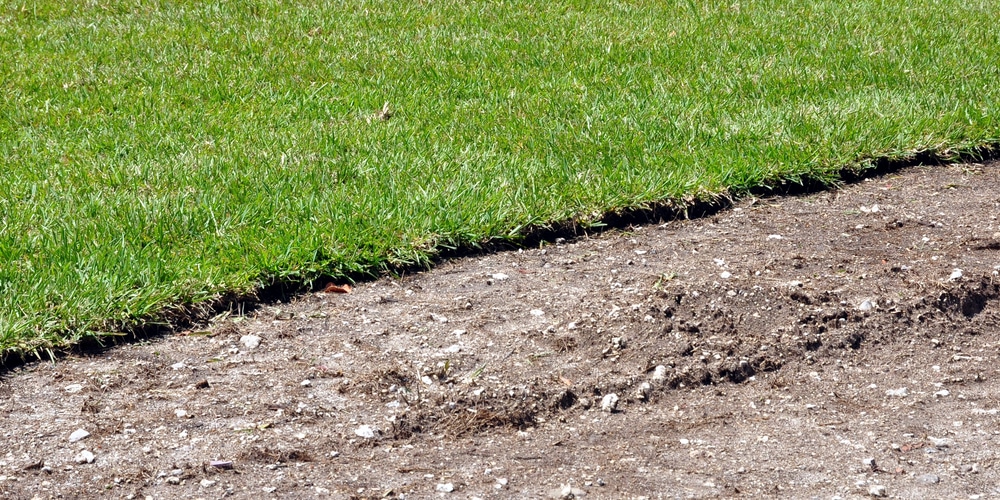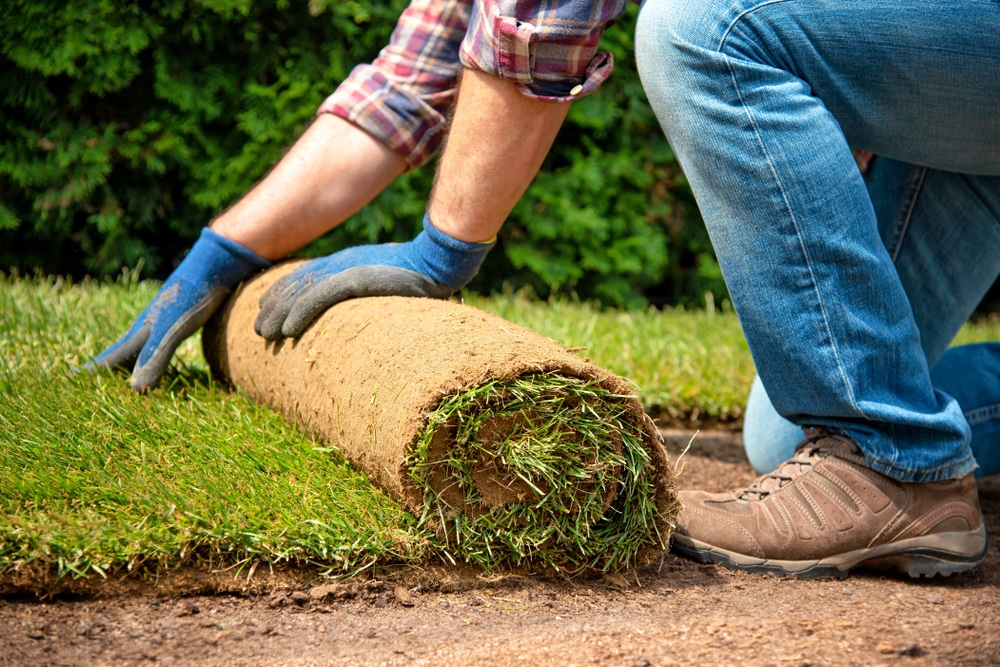Grass Seed Cost: What Controls It?

When considering lawn renovations or establishing a new lawn, comprehending the economics of grass seed is essential to your planning.
Market Overview and Pricing
- Market Dynamics: The grass seed market is influenced by various factors, from agricultural conditions to consumer demand.
- Market Dynamics: Prices fluctuate based on the availability and quality of seed.
- Cost Range: What you can expect to pay for grass seed typically ranges from $0.10 to $0.20 per square foot.
- Cost Range: Specific costs can be influenced by type, brand, and vendor.
- Cost Range: For instance, as per recent data, the average cost to seed a lawn is about $1,077.
Factors Influencing Grass Seed Costs
- Seed Quality and Type: Premium seeds with higher germination rates and lower presence of weed seeds often come at a higher cost.
- Coverage and Application: The size of your area and whether you’re starting a new lawn or overseeding an existing one will dictate the quantity needed.
- Regional Variation: Certain grass types are better suited to specific climates, affecting availability and pricing in your area.
- Purchase Timing: Buying off-season might save you money; however, optimal planting times can differ by region.
To make the most out of your grass seed investment, it’s crucial to invest in quality seeds with a high germination rate and low percentages of inert matter and weeds.
This attention to detail ensures you’re not spending money on non-viable seeds or introducing more weeds into your lawn.
Cost-Effective Strategies for Lawn Seeding
When considering lawn seeding, your goal is to maximize the health of your lawn while minimizing costs.
Efficient purchasing strategies and timing, along with innovative seeding techniques, can make a significant difference in your lawn care budget.
Bulk Buying and Wholesale Options
- Advantages of Bulk Purchases: When you buy grass seed in bulk or from wholesale suppliers, the price per unit often drops significantly.
- Advantages of Bulk Purchases: This not only saves you money but also ensures that you have an ample supply on hand for larger lawns or future overseeding.
- Establishing Relationships: Building a rapport with a supplier can lead to further discounts, exclusive offers, or beneficial wholesale deals in the long term.
Seasonal Considerations for Purchasing
- Timing Your Purchase: Prices for grass seed can fluctuate throughout the year.
- Timing Your Purchase: Purchasing during the off-season may lead to lower costs. Look for end-of-season sales or discounts during winter months.
- Weather and Seed Growth: Buying seed adapted to your local climate and the current season enhances growth, reducing the need for reseeding and additional expenses.
Alternative Seeding Techniques
- Hydroseeding: This technique, which involves spraying a mixture of seed, mulch, and fertilizer over your lawn, can be more cost-effective than traditional methods, especially for large areas.
- DIY Seeding Methods: Simple techniques such as “slice seeding” or “spreading seed before rain” can improve seed contact with the soil without resulting in professional labor costs.
Financial Benefits of Quality Grass Seed (Do it Right the First Time)
Investing in quality grass seed can be a savvy economic move for your lawn care needs.
High-quality seed may come with a higher upfront cost, but the long-term savings are significant. Here’s how:
- Seed Cost vs. Coverage: The initial purchase of grass seed covers more ground per dollar compared to sod.
You can cover several thousand square feet for less than $100, while sod at $0.50 per square foot is substantially more costly for the same coverage.
- Longevity: Quality grass seed yields durable turf that resists disease and pests, reducing the need for costly treatments and repairs.
- Water Efficiency: Healthy grass from good seed varieties often requires less watering, which translates to lower utility bills.
Consider the elements that affect the price you pay for grass seed and how you can mitigate those costs:
| Factor | How to Manage Cost |
|---|---|
| Type of Grass | Choose a species suited to your climate to avoid costly replacements. |
| Preparation Work | Proper soil preparation can maximize seed germination and minimize waste. |
| Maintenance | Keep track of maintenance to avoid overspending on unnecessary products. |
By selecting the right seed, you’re not just creating a lush lawn; you’re establishing a cost-effective, low-maintenance landscape that will save you money for years to come.
High-quality seed can mean fewer bare patches, which in turn, translates to less reseeding over time. In the game of lawn economics, investing a little more now on quality grass seed can keep your wallet happy in the long-run.
Calculating the Return on Investment
When considering lawn renovation, you might be weighing the benefits of seeding versus sodding. To accurately calculate the return on investment (ROI) for grass seed, follow these steps:
- Determine Initial Costs:
- Calculate the cost of the grass seed per square foot.
- Add any supplementary materials (fertilizer, lime, etc.).
- Include the cost of equipment rental or purchase if you don’t already own what you need.
- Estimate Labor Costs:
- If hiring a professional, factor their fees into the total cost.
- DIY efforts should account for the value of your time.
- Project Future Savings:
- A healthy lawn can increase property value.
- Measure savings from reduced erosion and lower maintenance compared to sod.
- Perform the Calculation:
- Use the basic formula for ROI where:
[ ROI = (\text{Gain from Investment} – \text{Cost of Investment}) / \text{Cost of Investment} ] - Gain from Investment entails the sum of initial and future benefits.
- Cost of Investment refers to all the expenses incurred up-front.
- Use the basic formula for ROI where:
Your final result will be expressed as a percentage, which allows you to assess the efficiency of your investment in seeding your lawn.
This comparative approach ensures you make a financially sound decision that can lead to both immediate and long-term monetary advantages.
Consider further guidance from resources like the ROI: Return on Investment Meaning and Calculation Formulas by Investopedia that can offer deeper insights into this equation and its implications for your home investment strategies.
Frequently Asked Questions
When considering seeding your lawn, you likely have questions about the costs and processes involved. Here’s a concise guide to frequently asked economic questions surrounding grass seeding to help plan your lawn care budget effectively.
What is the average cost to seed a new lawn per square foot?
The average cost to seed a new lawn usually runs between $0.10 to $0.20 per square foot, but prices may vary based on grass type and lawn condition.
What are the typical labor costs associated with seeding a lawn?
Seeding a lawn can be labor-intensive, and professional lawn care services typically charge around $90 to $180 per 1,000 square feet for the work involved.
How much would it cost to seed an entire acre of lawn area?
- To seed an acre, you’re looking at costs typically ranging from $500 to over $2,000, heavily influenced by regional labor rates and the type of seed used.
How does the price of grass seed vary per pound?
The price per pound can differ significantly, generally ranging:
- From lower-cost options around a few dollars per pound.
- To premium seeds priced at over twenty dollars per pound.
Which factors contribute to the cost of high-quality grass seed?
Several factors affect the pricing of high-quality grass seed, including:
- Genetic engineering for disease resistance.
- Drought tolerance of the seed variety.
- The rarity or commonality of the grass species.
Is it more cost-effective to seed a lawn or install sod?
When budgeting for a new lawn, comparing the cost of sod versus seed is important.
Sod generally has a higher upfront cost but provides an instant lawn, whereas seeding is more affordable but requires time and care for growth.
Last update on 2025-04-03 / Affiliate links / Images from Amazon Product Advertising API




